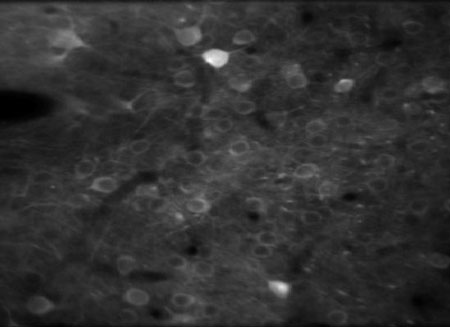Detecting moving objects during self-generated visual flow is still a largely unsolved computational problem. Self-driving cars, for example, have to resort to a wide array of detectors, including laser range-finders, to detect pedestrians. Humans detect pedestrians and moving objects based on visual information alone and still greatly outperform modern computer algorithms. The reasons for this are not clearly understood.

Figure: Two-photon image of mouse visual cortex.
Here, we show that there are signals in visual cortex of the mouse that are suited to detecting moving objects during self-motion. We image activity in visual cortex while mice explore a virtual environment in which we can control the visual-flow feedback the mouse experiences with high temporal and spatial precision. We can show that visual cortex reliably, and with high temporal and spatial resolution, signals local deviations from expected visual flow. Our results demonstrate that visual cortex is not simply a filter bank for feed-forward processing, but contains a specialized circuit for active sensory processing to detect deviations from expectations.
Reference
Mismatch Receptive Fields in Mouse Visual Cortex. Zmarz, P., Keller, G.B., 2016. Neuron 890–894. 1165 doi:10.1016/j.neuron.2016.09.057.


































